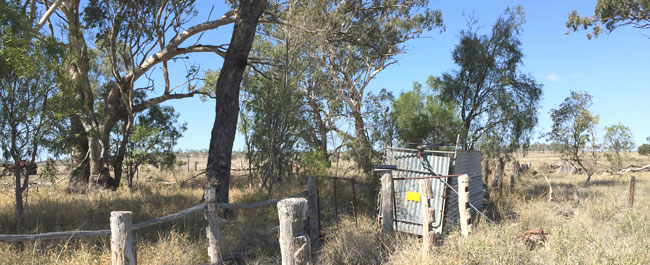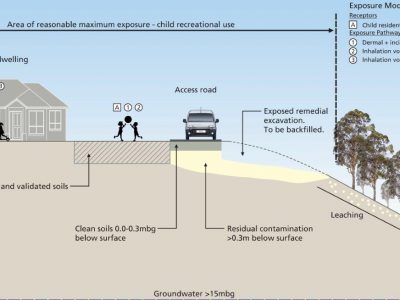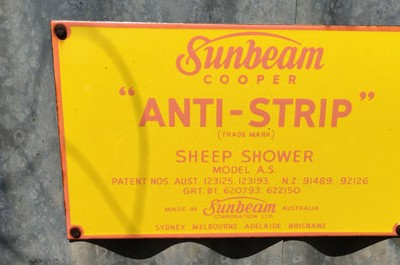Project Info
Project Description
Situation: The owners of a Queensland property with a former sheep spray race, commissioned Geo-Logix to conduct soil contamination investigations to understand the extent of contamination. The owners wanted to graze cattle on the property and needed to know the contamination status for NORM classification.
The property is around 2000ha and investigations centred on a 1613sqm-fenced area containing the spray race.
Action: Geo-Logix sampled soil in 15 locations within the fenced area and two locations outside the fence. They analysed the samples for contaminants of potential concern (COPC) associated with sheep spray races including OCPs, organophosphate pesticides (OPPs) and heavy metals.
Result: Geo-Logix’s sampling and analysis found no OCPs or OPPs present in the soil and no heavy metals apart from localised arsenic. Arsenic is not a residue of concern for livestock sale and Geo-Logix estimated the risk to grazing cattle was negligible considering the area available for grazing and the option of keeping the problem area fenced.
The Geo-Logix report recommended the property have a NORM-clear status eliminating the need for cattle testing.
Environmental Management Register (EMR) listing
The Environmental Protection Act 1994 considers sheep spray races to be a notifiable activity. Properties containing spray races are listed on the Queensland Department of Environment and Heritage Protection (DEHP) Environmental Management Register (EMR).
To remove the property from the EMR the owners would require remediation of the arsenic contamination with verification in a Contaminated Land Investigation Document (CLID) audited by an independent auditor.
What are OCPs?
Organochlorine pesticides (OCPs) were once widely used on farms to protect crops and livestock from insect damage. OCPs are toxic to humans and other animals and even at low concentrations can cause serious short and long-term harms. OCPs build up in fatty tissues and animals higher up the food chain (like humans) can accumulate high levels of the pesticides.
Keeping OCPs out of the food chain
To keep OCPs out of the food chain, livestock from OCP-contaminated properties are tested to ensure pesticide levels are below the food standard limits. Farmers foot the bill for the tests and for any resulting delays at the sale yards and abattoirs.
What is the NORM?
The National Organochlorine Pesticide (OCP) Residue Management (NORM) program classifies properties according to OCP-residue risk and a property’s NORM status is listed on the Extended Residue Program (ERP) database. Cattle farmers who can obtain a NORM-clear listing will eliminate the need for testing.




